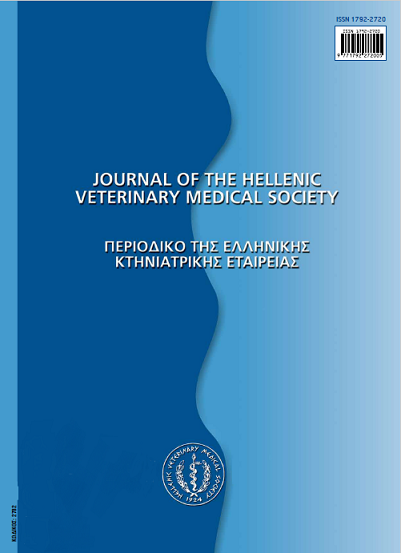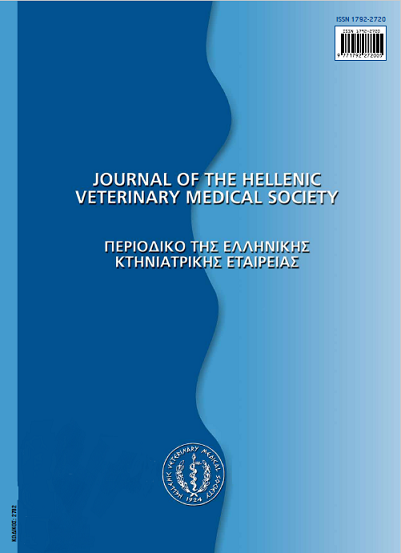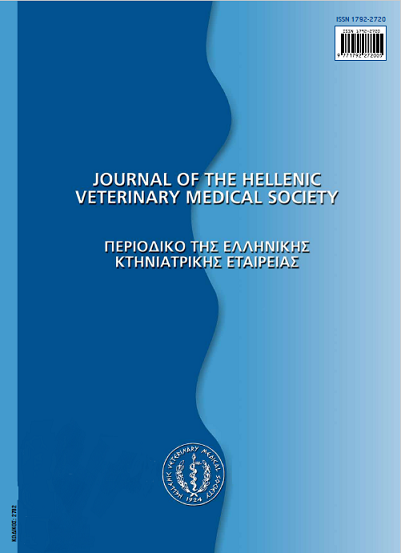Α case of Yersinia pseudotuberculosis infection in canaries
Abstract
This study describes the diagnosis, treatment and sanitary procedures in canaries and other cage-birds in a pet-shop, infected by Yersinia pseudotuberculosis. Main macroscopic lesions in the liver, spleen and intestine were characterized by numerous nodules, from pin-head size up to a litde larger. Also, swelling of the liver and spleen and congestion with ulceration of the mucus of the intestine were observed. Parenchyma of the liver and spleen, as well as in the intestinal wall, numerous small or larger cluster-shaped colonies of Gram-negative coccobacteria were found with coagulative necrosis of the normal tissue in the development areas of the bacterium, as well as around them. Bacteriological examination from the internal organs confirmed and identified the bacterium Yersinia pseudotuberculosis. Pseudotuberculosis was established for the first time in Greece through this study. The therapeutic schema with enrofloxacin in dose of 150 mg/L in drinking water showed itself to be more effective in the first stages of the disease in other cage-bird species, but less so in canaries.
Article Details
- Zitationsvorschlag
-
IORDANIDIS (Π. ΙΟΡΔΑΝΙΔΗΣ) P., GEORGOPOULOU (Ι. ΓΕΩΡΓΟΠΟΥΛΟΥ) I., BOUGIOUKLIS (Π. ΜΠΟΥΠΟΥΚΛΗΣ) P., LEKKAS (Σ. ΛΕΚΚΑΣ) S., & KOUTSOPOULOS (Δ. ΚΟΥΤΣΟΠΟΥΛΟΣ) D. (2017). Α case of Yersinia pseudotuberculosis infection in canaries. Journal of the Hellenic Veterinary Medical Society, 56(1), 20–26. https://doi.org/10.12681/jhvms.15065
- Ausgabe
- Bd. 56 Nr. 1 (2005)
- Rubrik
- Case Report
Authors who publish with this journal agree to the following terms:
· Authors retain copyright and grant the journal right of first publication with the work simultaneously licensed under a Creative Commons Attribution Non-Commercial License that allows others to share the work with an acknowledgement of the work's authorship and initial publication in this journal.
· Authors are able to enter into separate, additional contractual arrangements for the non-exclusive distribution of the journal's published version of the work (e.g. post it to an institutional repository or publish it in a book), with an acknowledgement of its initial publication in this journal.
· Authors are permitted and encouraged to post their work online (preferably in institutional repositories or on their website) prior to and during the submission process, as it can lead to productive exchanges, as well as earlier and greater citation of published work.













